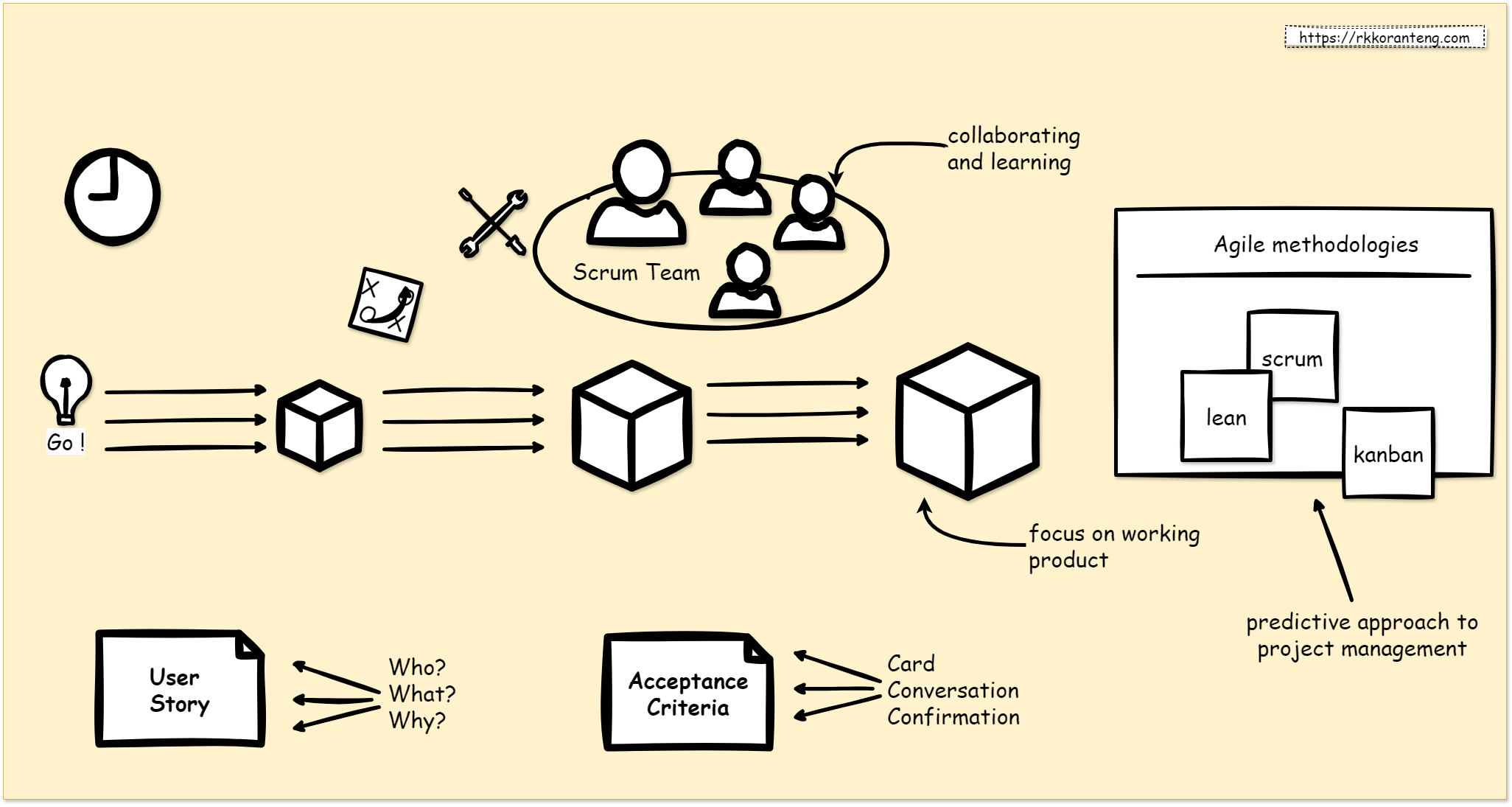Scrum - Intro
The scrum framework has gained popularity within tech industry because it allows teams to self-manage, learn from experience, and adapt to change.
1. What’s Project Management?
Inorder to really grasp what Scrum is, we need to first understand project management. Project management is the use of specific knowledge, skills, tools, and techniques to deliver something of value to people. A Project Manager is a person who uses project management methods to manage projects. The two widely recognized general project management methodologies are Waterfall and Agile.
2. Waterfall approach to managing projects
The waterfall project management approach entails a clearly defined sequence of execution with project phases that do not advance until a phase receives final approval. The waterfall approach is ideal for projects with fixed requirements, thereby making it a predictive approach to project management.
3. Agile approach to managing projects
Agile project management is an iterative approach to managing projects and focuses on continuous releases and incorporating customer feedback with every iteration. As the name implies, Agile methos is deal for projects with changing requirements, thereby making it an adaptive approach to project management
4. What’s Scrum?
Scrum is a subset/discipline within Agile project management. Scrum helps teams structure and manage their work through a set of values, principles, and practices inorder to provide value to customers in the shortest amount of time. The term “Scrum” is actually inspired by a scrum in the sport of rugby; in rugby, the team comes together in what they call a scrum to work together to move the ball forward. In this context, Scrum is where the team comes together to move the product forward.
5. What’s a scrum sprint?
Sprints are at the very heart of scrum. A sprint is a short time period (typically two week period) when a scrum team works to complete a set amount of work. A scrum sprint is purposely named as such because the product life cycle is broken down into short time periods with an emphasis on speed of completion.
6. What’s a user story in scrum?
A scrum user story is a short and simple description of a feature or functionality from the end-user’s perspective. This user story is ofetn turned into a task (or subtask) to be worked during the sprint. A user story helps the team understand what needs to be built and why.
7. Is there a specific format for user stories?
Yes, user stories typically follow this structure
👉 As a [user role],
👉 I wan to [action or fetaure],
👉 So that [benefit of reason]
Each user story should be refined with clear acceptance criteria to ensure the development team aligns with the desired outcome.💡
Example User story:
1
2
3
4
5
6
7
8
9
10
As a database engineer,
I wan to automate database releases,
So that I can ensure faster, consistent, and error-free deployments.
Acceptance criteria:
- The automation process should support rollback in case of failure.
- Deployment scripts should be version-controlled and auditable.
- Releases should require minimal manual intervention.
- Notifications should be sent upon success or failure.
- The process should support multiple environments (QA, Staging, Production).
8. Frequently asked questions
Scrum is a set of principles (framework) that is used to manage projects. Scrum falls under the Agile project management umbrella.
8.1 What’s Agile project management?
Agile project management is an iterative approach for managing projets; meaning that the product and the way it’s delivered are continuously refined and improved through repeated cycles of development, testing, and feedback. Agile project management helps when working with unpredictable, complex, and frequently changing project requirements.
8.2 Do DBAs need to know Scrum … and why?
Yes, DBAs should understand the fundamentals of Scrum because it’s the preferred framework for managing IT projects.
8.3 Why is Scrum so popular now?
The scrum framework has gained popularity within tech industry because it allows teams to self-manage, learn from experience, and adapt to change. These become competitive advantages when a team is very product/software development focused. Scrum therefore fits perfectly as an Agile project management approach for technology projects.
8.4 Should DBAs get Scrum Master cert?
As a DBA, it’s not necessary to obtain the Scrum Master certification. Your role is to understand Agile concepts and participate in the Scrum events. There are more relevant certs for DBAs to focus on.
8.5 What does it me to ‘swarm’ an issue?
Swarming in scrum is a technique that involves multiple team members working together on a single, high-priority task. The goal is to complete the task as quickly as possible.
